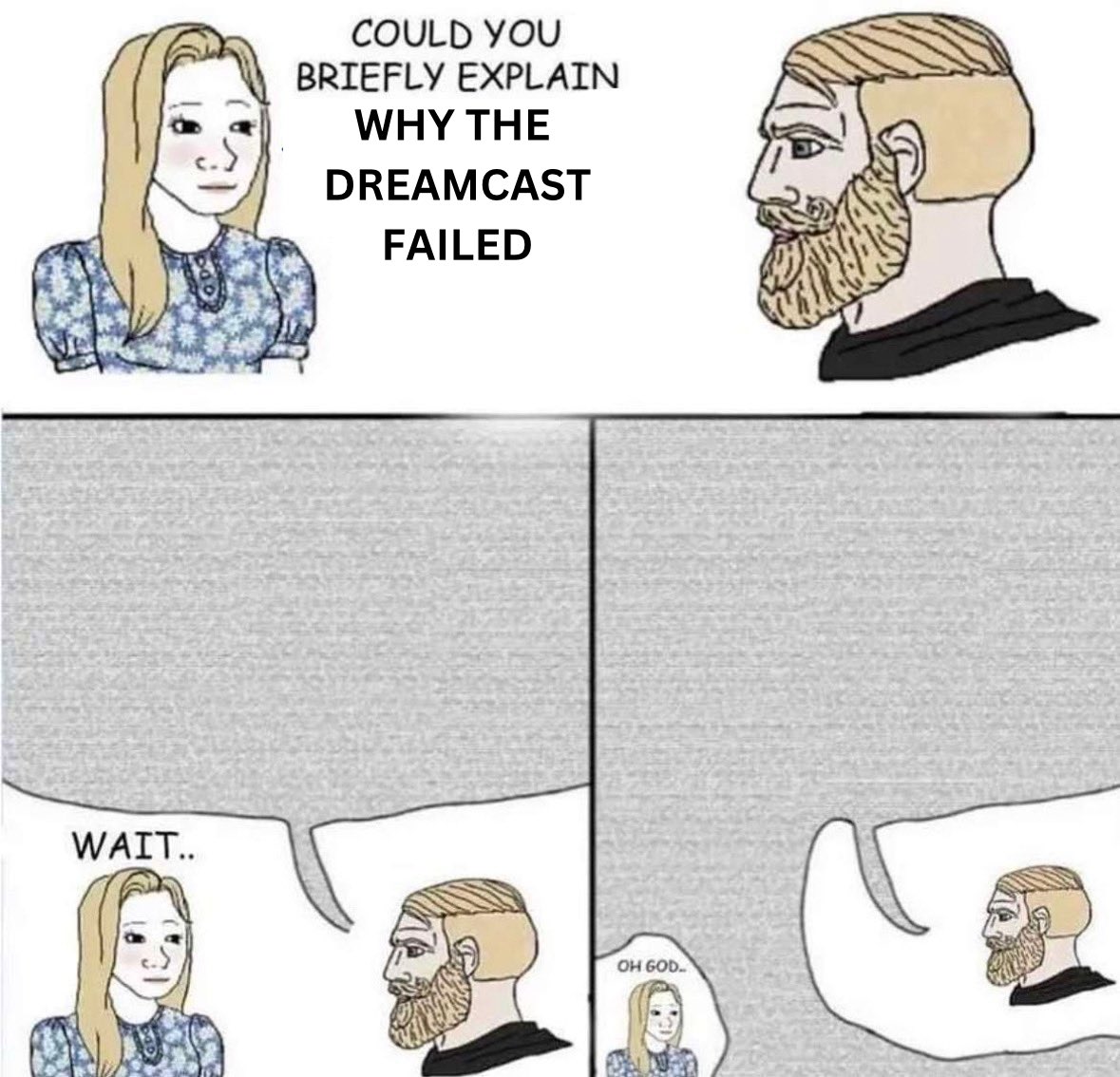Looks like it's infodump time.
Sega released the Genesis/Mega Drive in 1988, then to extend its capabilities they released the Sega CD/Mega CD addon in 1991, which was followed by a second addon, the 32X, in 1994. There were even some games that required both add-ons, resulting in a high initial investment from consumers. The base Genesis/Mega Drive was massively successful outside of Japan and the Sega CD/Mega CD did reasonably well, but the 32X flopped. This was due to a lack of interest, partially because they also released the Genesis'/Mega Drive's successor, the Sega Saturn, in 1994 (the 32X actually released after the Saturn in Japan).
In the fourth-generation console war Sega only had to deal with Nintendo as their main competitor. For the fifth-generation there was a second front. PlayStation came out in 1994 in Japan and was a success from launch. Sega was terrified. Both the Saturn and PlayStation would debut internationally in September 1995 and Sega knew they had to do something decisive to get ahead. E3 1995 would make or break Saturn in America and Sega had a plan to beat Sony. At their presentation Sega declared that Saturn would be available immediately, four months ahead of the previous release date, at select retailers at a price of $399. This gamble backfired massively on Sega. The retailers that weren't part of the early release were pissed and some even boycotted Sega over this. The second blow came from Sony. At the PlayStation presentation they had one of their presenter walk on stage, say "299" and leave. This number was PlayStation's price.
By the time Dreamcast came out in 1998 Sega had tanked their reputation with consumers and retailers and they never stood a chance against the PlayStation 2. Additionally, the PS2 had almost complete backwards compatibility with its predecessor and it played DVDs. It had better specs than the Dreamcast, but not GameCube and Xbox. It is also worth noting that the PS2 was so successful that it actually outsold all three of it's competitors combined.
